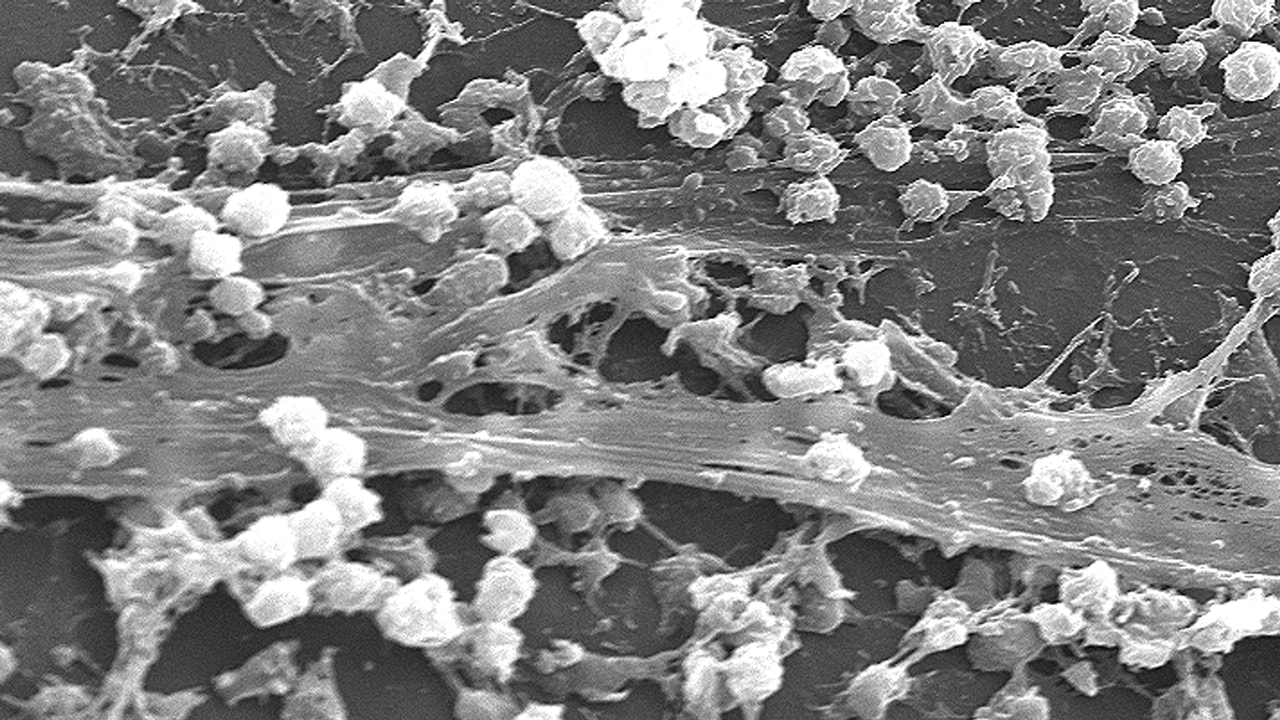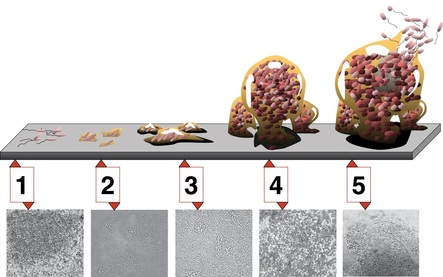Biofilms and Lyme Disease
Borrelia Burgdorferi's Shield, Forum and Place of Commerce
Biofilm is a slimy and gluey substance that Borrelia Burgdorferi generates to shield itself from antibiotics and the immune system. Borrelia can also hide in other microbial's biofilm and vice versa. Fibrin, a protein our bodies create for blot clotting, is the basic building material used for generating a biofilm. A biofilm is designed to adhere to human tissue where damage to the tissue and inflammation occur.
Within the biofilm, Borrelia is capable of talking with its own species or other bacteria and carrying out offensive actions. Borrelia can also receive and swap genetic information such as drug resistant genes. Its reproduction cycle, given that it's every few weeks, can yield drug resistant strains in only a few generations. This could explain why years of antibiotics can't rid the infection.
|
A biofilm also houses Borrelia in cyst form and co-infections such as Mycoplasma.
False Negative Test ResultsA biofilm is capable of protecting Borrelia from the immune system, the human body's antibody generator. The Western Blot and Elisa Test use antibodies as an indication for Lyme Disease. If no antibodies are created, tests will yield negative results despite having full blown Lyme Disease.
|
|
Ineffective Antibiotics
Antibiotics, conventional or holistic, can only kill the bacteria when it is exposed. If Borrelia is concealed within a biofilm, antibiotics have no way of penetrating and become ineffective. In order for antibiotics to kill the bacteria that resides within a biofilm, it will require the assistance of a biofilm dissolver.
Biofilm Dissolvers
Biofilm dissolvers are capable of breaking up the biofilm and exposing Borrelia and potential coinfections inside to antibiotics and the immune system. Antibiotics and the immune system must work in conjunction with biofilm dissolvers in order to implement their total effectiveness and functionality.
Professional Opinions on Biofilms
The professional opinions of treating biofilms themselves along with the bacteria responsible for Lyme Disease are split. However, the prevailing opinion from the best and most knowledgeable Lyme doctors is that biofilms should be addressed.
|
|
The dissent for treating biofilms comes from Stephen Buhner, one of the best and most knowledgeable holistic figures on treating Lyme Disease. He says that biofilms should not be addressed because when a biofilm is broken up, the Lyme bacteria and potential coinfections that were once inside and in one location, are now being spread throughout the body. Before, the pathogens contained and concealed within a biofilm were isolated in just one location.
Stephen also adds that people should do their own research and form their own opinions on treating biofilms.
|
The Potential for Relapse
Because the bacteria responsible for Lyme Disease and its coinfections can obtain protection from not only the immune system in a biofilm, but antibiotics as well, there exists the potential for a person to relapse even after extensive antibiotic therapy.
Holistic Biofilm Dissolvers
- Serrapeptase - Serrapeptase is an enzyme produced by serratia bacteria in the intestines of silkworms. The enzyme only dissolves dead or damaged tissue such as Fibrin, the building blocks for Biofilm. Once the enzyme dissolves the fibrin, Borrelia is exposed to antibiotics and the immune system.
- Lumbrokinase - Lumbrokinase is an enzyme produced by earthworms. It is commonly used for breaking up biofilm by dissolving the fibrin that it consists of. Lumbrokinase is said to be more powerful than Nattokinase.
- Nattokinase - Nattokinase is an enzyme produced from Natto, a Japanese food made from fermented soybeans. It is commonly used for breaking up Biofilm by dissolving the fibrin it consists of.
Conventional Biofilm Dissolvers
- Tindamax - Tindamax is a prescription drug capable of dissolving Biofilm but is more widely used as a Lyme cyst buster.
More Information on Biofilms
"This video demonstrates the normative biological state of Borrelia Burgdorferi, a biofilm community."
Also on Tired of Lyme
Refresh
Refresh
Subscribe to Tired of lyme!
Subscribe to Tired of Lyme's mailing list and get notified of new articles!






Comments